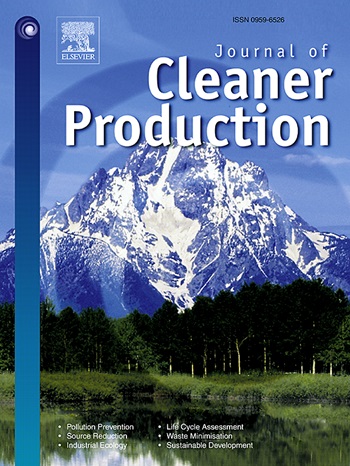IF 9.7
1区 环境科学与生态学
Q1 ENGINEERING, ENVIRONMENTAL
引用次数: 0
摘要
近年来,原材料成本的上升和可持续发展的推动,使再生沥青路面(RAP)的回收利用成为公路工程研究的重点。热就地再循环(HIR)技术是一种沥青路面再循环方法,通过加热、铣刨、添加外加材料、热拌、摊铺和碾压等单一工序处理 100% 的 RAP。这种技术具有减少碳排放、环保、稳定、耐久和易于施工等优点。国内外研究人员和相关企业对 HIR 技术进行了广泛研究,在设备创新和技术进步方面取得了进展,积累了大量工程经验。此外,还对再生器、再生机制、热中央装置再生、冷再生和暖再生进行了广泛的文献综述。然而,在现有的研究中,对 HIR 技术的讨论还很有限。因此,对 HIR 技术进行全面回顾是非常必要的。本文首先概述了 HIR 的建造过程、设备和常用技术,并特别关注了前景广阔的多层同步循环方法。它回顾了 HIR 的温度控制方法,评估了当前加热模式和技术的优势和局限性,并提出耦合和多级加热技术可显著提高加热效率和均匀性。此外,论文还介绍了一般的设计流程和混合料配合比设计方法,强调了优化混合料性能的策略和现有缺陷,并讨论了 HIR 沥青混合料的施工质量控制方法和性能变化规律。此外,本文还对经济效益和环境效益进行了比较和分析。总之,本文全面回顾了 HIR 各方面的研究进展,包括设计方法、施工设备、实施程序和养护效果。它指出了目前存在的不足,并概述了未来的研究方向,旨在促进 HIR 技术的创新,为实现公路工程节能减排和发展绿色循环经济的战略目标做出贡献。本文章由计算机程序翻译,如有差异,请以英文原文为准。
The state-of-the-art review on the utilization of reclaimed asphalt pavement via hot in-place recycling technology
In recent years, the rise in raw material costs and the push towards sustainable development have made the recycling of reclaimed asphalt pavement (RAP) a prominent focus in highway engineering research. Hot in-place recycling (HIR) technology is an asphalt pavement recycling method that processes 100% of RAP through a single process involving heating, milling, adding external materials, hot mixing, paving, and rolling. This technique offers benefits such as reduced carbon emissions, environmental friendliness, stability, durability, and ease of construction. Both domestic and international researchers, as well as relevant enterprises, have extensively studied HIR technology, leading to innovations in equipment and technological advancements and accumulating considerable engineering experience. Additionally, extensive literature reviews have been conducted on rejuvenators, regeneration mechanisms, hot central plant recycling, cold recycling, and warm recycling. However, HIR technology has been only briefly discussed in existing studies. Thus, a comprehensive review of HIR technology is essential. This paper begins by outlining the HIR construction process, equipment, and common technologies, with a particular focus on the promising multi-layer synchronized recycling method. It reviews temperature control methods in HIR, evaluates the advantages and limitations of current heating modes and technologies, and suggests that coupling and multi-stage heating technology can significantly enhance heating efficiency and uniformity. Additionally, the paper introduces general design processes and mix proportion design methods, highlights strategies for optimizing mixture performance and existing shortcomings, and discusses construction quality control methods and performance variation law of HIR asphalt mixtures. Furthermore, it compares and analyzes the economic and environmental benefits. Overall, this paper provides a comprehensive review of research progress in various aspects of HIR, including design methods, construction equipment, implementation procedures, and maintenance effects. It identifies current deficiencies and outlines future research directions, aiming to foster innovation in HIR technology and contribute to achieving strategic goals in energy conservation, emission reduction, and the development of a green circular economy in highway engineering.
求助全文
通过发布文献求助,成功后即可免费获取论文全文。
去求助
来源期刊

Journal of Cleaner Production
环境科学-工程:环境
CiteScore
20.40
自引率
9.00%
发文量
4720
审稿时长
111 days
期刊介绍:
The Journal of Cleaner Production is an international, transdisciplinary journal that addresses and discusses theoretical and practical Cleaner Production, Environmental, and Sustainability issues. It aims to help societies become more sustainable by focusing on the concept of 'Cleaner Production', which aims at preventing waste production and increasing efficiencies in energy, water, resources, and human capital use. The journal serves as a platform for corporations, governments, education institutions, regions, and societies to engage in discussions and research related to Cleaner Production, environmental, and sustainability practices.
 求助内容:
求助内容: 应助结果提醒方式:
应助结果提醒方式:


